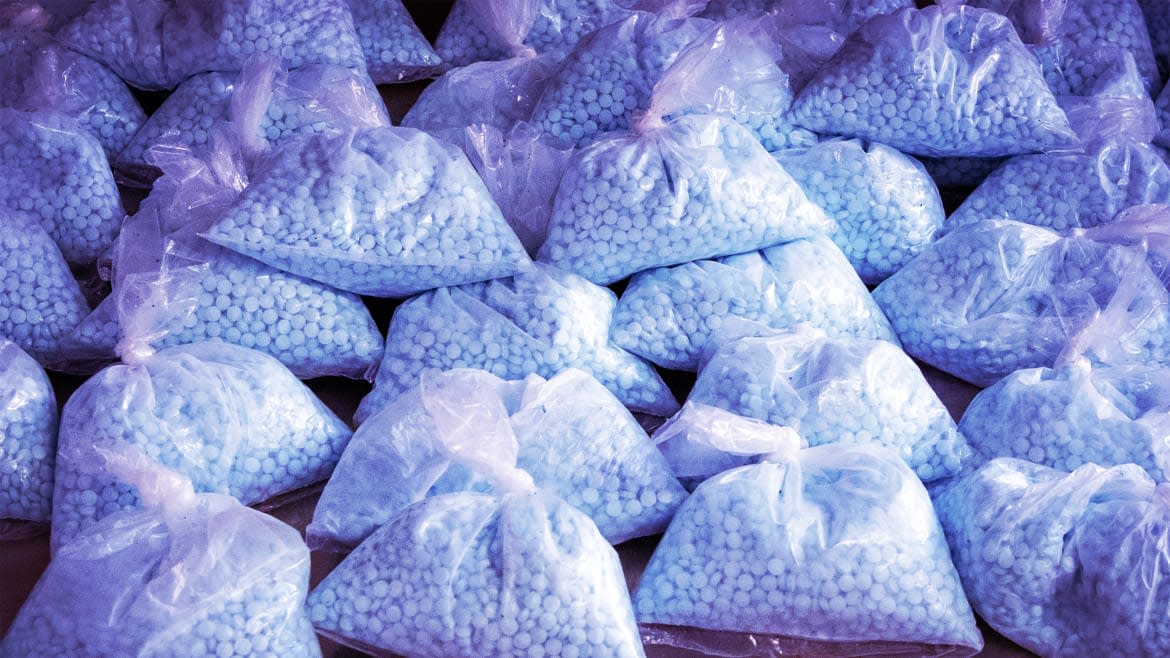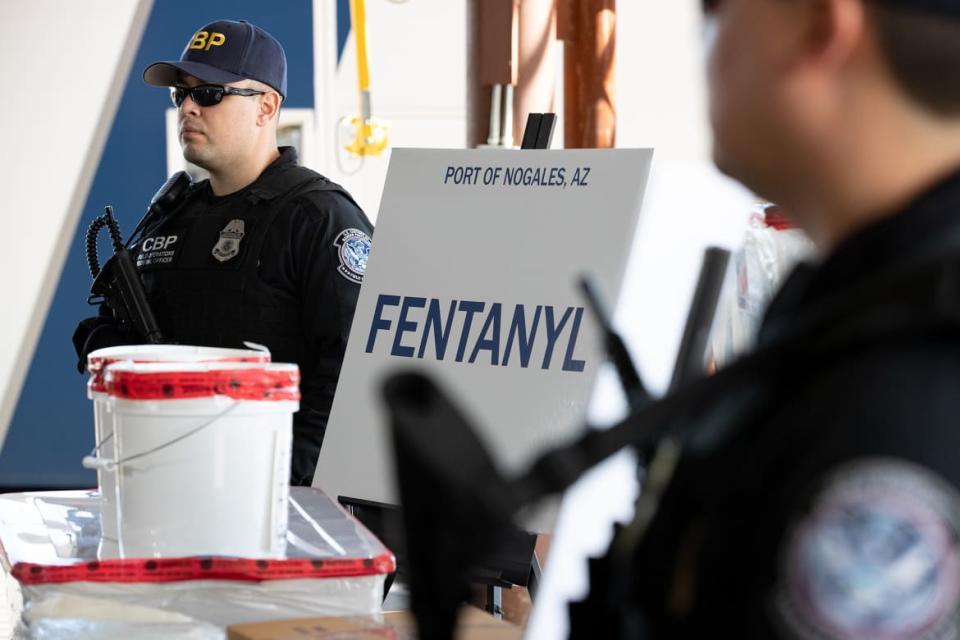Fentanyl Police Busts Actually Make the Overdose Problem Much Worse

“Each seizure saves lives.” That’s what New York State Police acting Superintendent Steven James said last month after his team seized 5,000 fentanyl pills.
But are ever-increasing fentanyl seizures a sign that we’re finally winning the war on drugs? Not even remotely. Indeed, the evidence shows the opposite: Fentanyl seizures don’t save lives; they take them.
Now, there’s recent research that backs up this counterintuitive dynamic. Researchers reported in the American Journal of Public Health that disruptions to the drug market resulting from police drug busts in Indianapolis during 2020 and 2021 increased fatal overdoses over three weeks within a 500-meter radius of the drug seizure. Fatal overdoses doubled by two weeks after the drug bust.
Oregon’s Making a Terrible Mistake in Rebooting the Drug War
While the study shows seizures exacerbate the crisis in the short term, they also cause long-term harm.
First, deaths increase in the immediate aftermath of the seizures as frantic consumers adjust to the supply disruption. Second, deaths increase over the course of years as producers and dealers adjust to repeated losses by creating more potent drugs that are easier to conceal, smuggle, and distribute.
Start with the short term. When local law enforcement conducts major drug busts, they do temporarily disrupt the market for street drugs, but people who use and have grown dependent on drugs do not simply give up drugs and live clean. Instead, they search out new, unfamiliar dealers who might sell them drugs with different ingredients and potency, which can lead to more deaths.
Now, it’s true that it might take days or weeks for drug users to connect with a new dealer, and this might seem to “save lives.” But this often backfires, because by the time they find a new source, users’ tolerance has waned, making them more susceptible to a fatal overdose if they consume their usual dose.
So, drug busts can cause more deaths, even in the very near term. In the long term, their cumulative effect can unleash an avalanche of mortal destruction. As the crackdown on a substance intensifies, drug producers seek new ways to stretch their supply and still make the same profits, incentivizing the creation of ever-more potent forms of drugs.
We’ve seen this story play out again and again. It’s the iron law of prohibition—“the harder the law enforcement, the harder the drugs.” During Alcohol Prohibition, beer and wine became bathtub gin, and bootleggers smuggled whiskey into the country. During Prohibition, an average of 1,000 people died each year from tainted or denatured alcohol.

U.S. Customs and Border Protection officers at the Nogales Commercial Facility seized nearly $4.6 million in fentanyl and methamphetamine totaling close to 650 pounds on January 26, 2019.
More recently, powdered cocaine became crack, “pseudo-meth” became P2P-meth, oxycodone became heroin, and heroin became fentanyl. Now fentanyl is becoming fentanyl plus xylazine (a veterinary tranquilizer), or “tranq.”
How do seizures generate these “super-drugs?”
Consider the most recent surge in fentanyl deaths. In 2012, Mexican cartels mostly added fentanyl to heroin to boost its potency so they could smuggle it in smaller packages. The drugs were often smuggled across the border overwhelmingly through U.S. ports of entry. But in response to the COVID-19 pandemic, in March 2020 the U.S. banned “nonessential” travel from Mexico.
Tax Legal Weed and Give the Money to Drug War Victims
Massively restricting the number of crossers freed up personnel to search a higher percentage of crossers, leading smugglers to switch to the more lethal but more concealable fentanyl.
International border closures made transporting opium more challenging and supply chain problems made acetic anhydride, the chemical used to make opium into heroin, scarce. Drug traffickers decided to switch from heroin to fentanyl, which was easy to make in basement labs with readily available ingredients, with no need to grow and ship opium.
By June 2020, total seizures had nearly doubled. However, the ratio of heroin to fentanyl began to shift. Fentanyl became predominant for the first time. By the time the restrictions were ended in January 2022, fentanyl accounted for 97 percent—where it has since remained.
Traffickers responded to increased interdictions of heroin by smuggling fentanyl. Fentanyl is 50 times more potent than heroin, so the same market can be supplied with 50 fewer trips (or 2 percent as much weight). Replacing heroin with fentanyl allowed drug cartels to make the same, or even greater, profits despite more seizures. Nearly every month that the nonessential travel ban was in effect, fentanyl deaths increased.
The border crackdown, combined with other pandemic supply chain disruptions, caused a permanent shift in the drug market to a more dangerous drug—leading to tens of thousands of additional deaths.
As a more potent and deadly synthetic is surging into the market, we are already seeing that fentanyl seizures are having the same effect as heroin seizures. Nitazenes, which can be 10 times more potent than fentanyl or worse, are exploding onto the scene in the U.K. and showing up in toxicology reports all over the United States.
It’s hard to put one’s head around the idea that drug busts are killing people. Drug busts feel justified. The impulse to save people from themselves is strong and understandable. But policymakers and law enforcement should stop basing policy on gut instincts and emotional reactions. They should rationally look at these facts and reconsider the consequences of their actions.
Convicted DEA Agent Says He and Others Swindled the Government in ‘Very Fun’ Drug War
If drug busts don’t save lives, what can? One way is by making it easier for people to access safer, legal alternatives to fentanyl. Depending on the individual circumstances, these could include methadone, buprenorphine, and prescription pain relievers. Lawmakers can empower clinicians to treat addiction in their offices and clinics, devoid of the queues, stigma, and scarcity of government-approved methadone treatment centers.
Congress can lift the federal ban on overdose prevention centers, a proven form of harm reduction since 1986, currently saving lives in 16 countries and 147 locations throughout the developed world.
For more than 50 years law enforcement has been holding press briefings lauding bigger and bigger drug busts as overdose death rates soar higher and higher. There’s a word that describes doing the same thing over and over and expecting a different result.
Get the Daily Beast's biggest scoops and scandals delivered right to your inbox. Sign up now.
Stay informed and gain unlimited access to the Daily Beast's unmatched reporting. Subscribe now.


